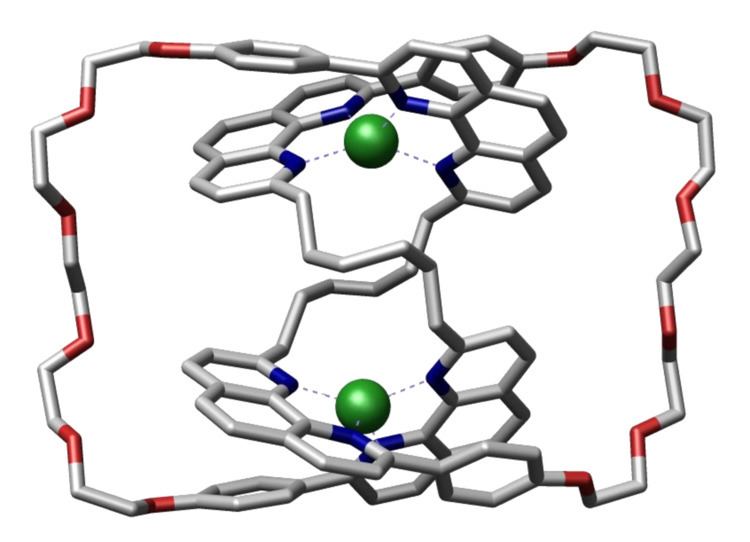 | ||
In chemistry, a molecular knot, or knotane, is a mechanically-interlocked molecular architecture that is analogous to a macroscopic knot. A molecular knot in a trefoil knot configuration is chiral, having at least two enantiomers. Examples of naturally formed knotanes are DNA and certain proteins. Lactoferrin has an unusual biochemical reactivity compared to its linear analogue. Other synthetic molecular knots have a distinct globular shape and nanometer sized dimensions that make them potential building blocks in nanotechnology. The first knot was synthesised by Jean-Pierre Sauvage in 1989.
The term knotane was coined by Fritz Vögtle et al. in Angewandte Chemie International Edition in 2000 by analogy with rotaxane and catenane. The term, however, has yet to be adopted by IUPAC.
Several synthetic knotanes have been reported. A pentafoil knot prepared using dinamic covalent chemistry has been reported. Later in 2016, a fully organic pentafoil knot was also reported, including the very first use of a molecular knot to allosterically regulate catalysis. In January 2017 an 819 knot (the tightest knot ever synthesized) was reported by David Leigh's group.
